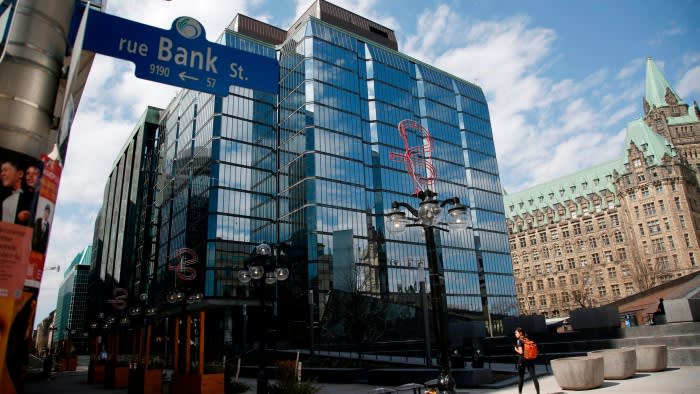Unlock the Editor’s Digest for free
Roula Khalaf, Editor of the FT, selects her favourite stories in this weekly newsletter.
The Bank of Canada has signalled that borrowing costs could fall further in the coming months, after rate-setters cut interest rates for the third time in a row on Wednesday.
The central bank lowered its benchmark interest rate by a quarter of a percentage point to 4.25 per cent, in line with expectations.
Its governor, Tiff Macklem, said after the decision that if inflation continued to fall back towards the central bank’s 2 per cent goal, then it was “reasonable to expect further cuts”.
While inflation remains above rate-setters’ target at 2.5 per cent, growth has been weak for several quarters. The central bank expects inflation to fall to 2 per cent by the second half of 2025.
The unemployment rate has inched up to 6.4 per cent — nearly 2 percentage points higher than the record low set two summers ago.
The central bank’s decision comes against the backdrop of a pressing social and political issue: high housing costs.
Housing affordability has become a bellwether for Justin Trudeau’s Liberal government a year out from a national election.
Shortly after the announcement, Trudeau posted on social media that there was still a “lot of work to make life more affordable” for Canadians.
“But this is a strong signal that we’re going in the right direction, and it’s welcome relief for a lot of people looking to buy a home,” he said on X.
Taylor Schleich, a rates strategist at National Bank of Canada, told the Financial Times that the rate cuts were a low-stakes tactic aimed at reducing mortgage costs for Canadian homeowners. Schleich said rates were so high that it was still quite “easy” for rate-setters to continue to incrementally cut them.
“Decisions start to get a bit more finely balanced probably next year,” he said.
While the central bank could move in bigger increments should growth come in lower than anticipated, Macklem indicated that the lender was likely to stick with smaller cuts.
“We will be assessing the data as it comes out,” the governor told the media. “If we need to take a bigger step, we are prepared to take a bigger step. At this point, 25 basis points looks appropriate.”
Tony Stillo, director of economics for Canada at Oxford Economics, said: “We think this means larger 50 basis-point cuts are off the table for now.”
The latest Canadian rate cut comes amid expectations that the US Federal Reserve will lower borrowing costs for the first time in four years at its September 18 vote.
Other G7 central banks including the Bank of England and the European Central Bank have already started to reduce rates amid signs that the worst bout of inflation for a generation is over.
Carolyn Rogers, a deputy governor at the central bank, told reporters on Wednesday that Canada’s rapid population growth had had a big effect on the economy.
“The Canadian economy is having trouble absorbing the number of workers into jobs,” she said. “We haven’t seen a big increase in unemployment but we have seen vacancies come down and we are seeing the unemployed rate tick up a bit.”
Last week, Trudeau announced measures to tighten Canada’s foreign workers programme.
While the programme is credited with helping Canada recover from the pandemic, it has been blamed for the high cost of housing, pressure on the healthcare system and rising youth unemployment.
Canada has added more than 1.6mn citizens since 2018, according to official data. The number of non-permanent residents in the country — a figure that includes temporary workers, international students and asylum seekers — has more than doubled from about 1.3mn in 2021 to nearly 2.8mn in the second quarter of this year, Statistics Canada data shows.
“It is something we are watching closely,” Rogers said.


